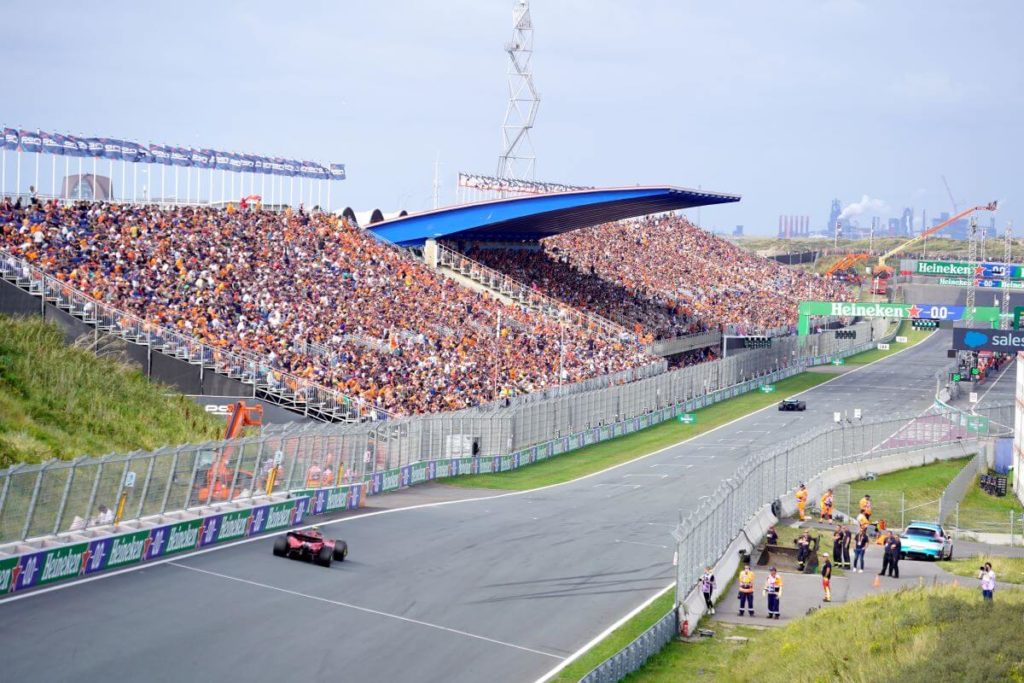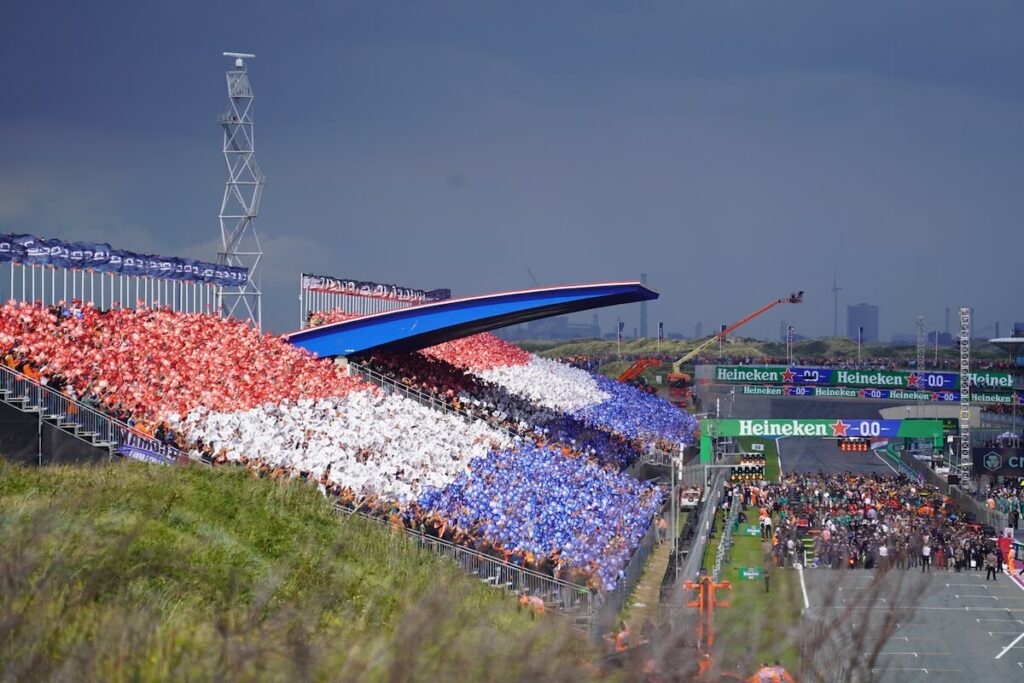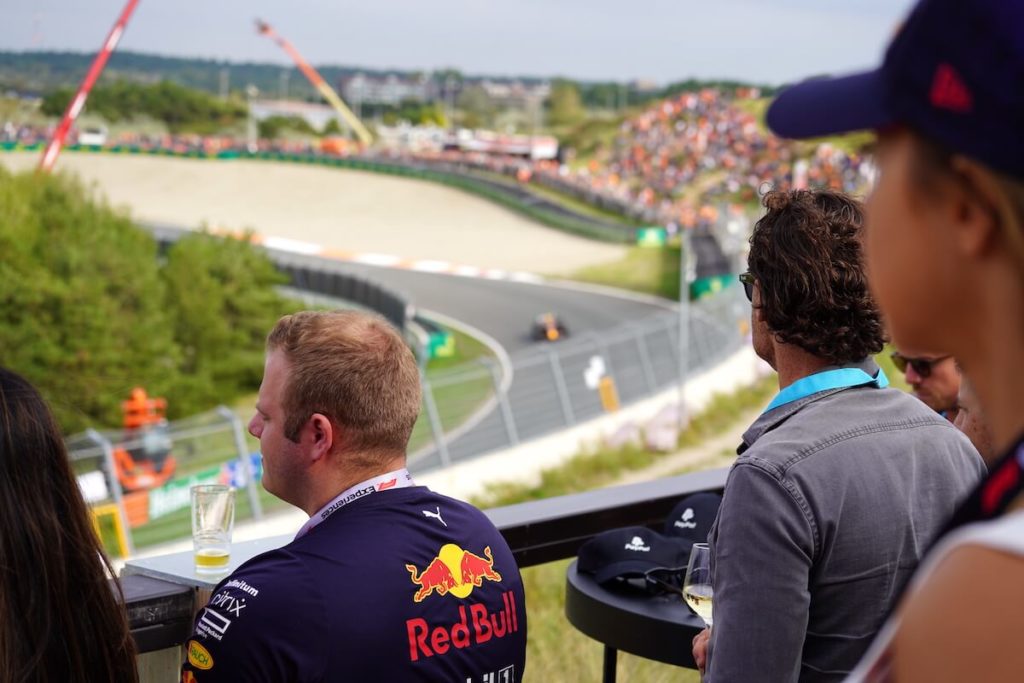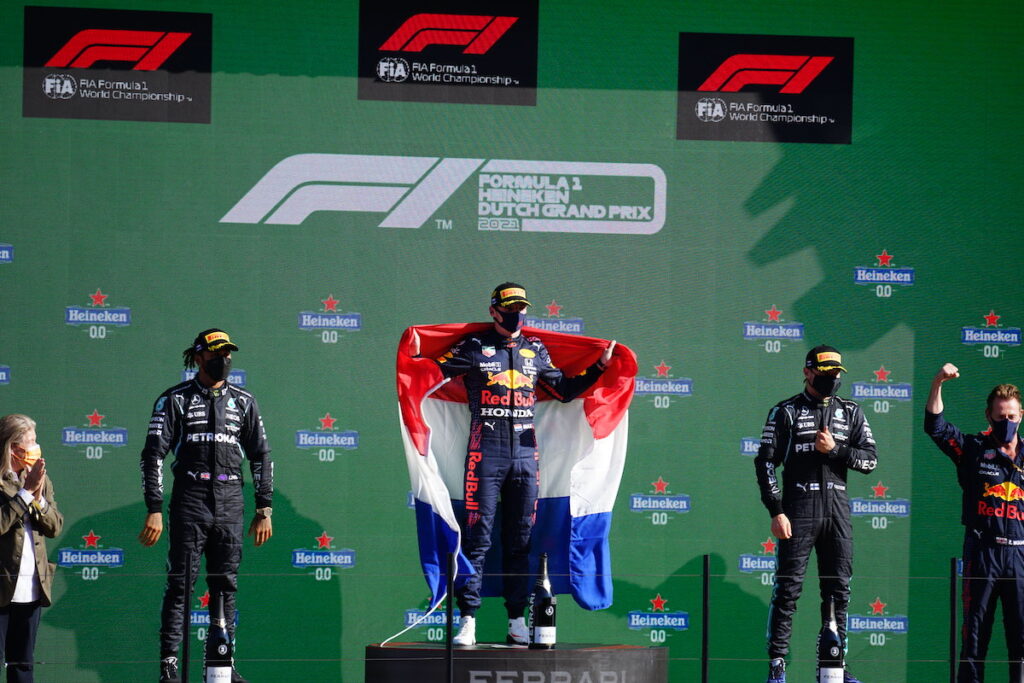
Located in sand dunes near a popular seaside resort town, Circuit Zandvoort hosted the Dutch Grand Prix between 1948-1985 and made a very welcome return to the Formula 1 calendar in 2021
- The 2024 Dutch Grand Prix runs from August 23-25
- This post contains affiliate links. We may receive a commission if you make a purchase after clicking on one of these links
Zandvoort previously hosted the Dutch Grand Prix between 1948 and 1985. It was set to return to the calendar in 2020 after a 35 year-absence thanks to huge local support for Dutch driver Max Verstappen, but the plan was put on hold by a year due to the coronavirus pandemic.
Unusually located among the sand dunes in a popular seaside resort, the Zandvoort circuit is situated 40km west of Amsterdam on the North Sea coast. The track was the sole host of the 30 previous Dutch Grands Prix. Dutch track designer John Hugenholtz, who designed the Suzuka circuit, is often wrongly attributed as being responsible for the Zandvoort track. Although he had ties to the circuit, it was actually a group of Dutch motorcyclist enthusiasts who designed the track with assistance from Sammy Davis, who won the 24 Hours of Le Mans in 1927.
The circuit opened in August 1948, hosting the “Zandvoort Grand Prix”. That became the Dutch Grand Prix in the following year, and the event joined the F1 calendar in 1952, only two years after the advent of the Modern World Championship. The track made use of communications roads built during the Second World War by the occupying German army. The 1952 and 1953 races were held to Formula 2 specifications, so it wasn’t until 1955 that F1 machinery first took on the challenges of the Zandvoort circuit. The original 4.2km track had multiple elevation changes, and featured fast, sweeping turns, such as the fearsome Tarzan corner.
The Early Years of the Dutch Grand Prix
The Dutch Grand Prix was not held every year between 1950 and 1985. Notably, the race fell off the calendar in 1972. There was a push to improve safety at Formula 1 events at the time, especially following Piers Courage’s fatal accident at Zandvoort in 1970. Dutch Grand Prix organisers lacked funds to improve safety, so drivers refused to race there and the event was dropped from the calendar. F1 returned to a much-improved Zandvoort the following year, but tragedy struck as Roger Williamson was killed after his car caught fire following a heavy crash. Despite this, Formula 1 continued to visit the track until 1985, when the company which owned the circuit went out of business.
Although the track fell into disuse – and half of the track was sold to a bungalow park company in 1987 – it was modified in 1989 as a 2.6km layout, which became known as “Circuit Park Zandvoort”. By 2001, the track had been extended to 4.3km with new facilities, including a new pit building and new grandstands. Zandvoort has since become a regular fixture in junior categories; many current F1 drivers have experience at the circuit.


The Return of the Dutch Grand Prix
After months, if not years, of speculation, the return of the Dutch Grand Prix was finally confirmed in May 2019. The meteoric rise of Max Verstappen was the driving factor behind the event’s comeback. Verstappen became Formula 1’s youngest Grand Prix winner in 2016 and Dutch fans have boosted attendance figures at races across Europe since his debut in 2015. Though the circuit only has a capacity of just over 100,000, it was reported that over a million fans applied for tickets to the comeback event.
An estimated €4 million was spent on Circuit Zandvoort to prepare for the return of Formula 1, with half of the funds earmarked to improve access to the circuit. Some corners, including Tarzan, Scheivlak and Kumho have extended run-off areas. Other corners were widened and the start/finish line was moved to improve the spectator experience. The final corner, Arie Luyendijkbocht, is slightly banked to allow more overtaking opportunity.
The return of the Dutch Grand Prix was postponed due to COVID-19, but was rescheduled for September 2021. Despite the venue running at two third capacity due to the pandemic, the grandstands were awash with a sea of orange as Verstappen’s fans were out in force. For the partisan crowd, the race was well worth the 36-year wait, with the Red Bull driver victorious on home soil.
Verstappen delighted the home fans once more in 2022 with a second successive Zandvoort win. 305,000 attended the first Dutch Grand Prix weekend to run at full capacity since 1985. The attendance figure was a new record for the event. That figure was equalled in 2023 as Verstappen took another home win in a thrilling wet to dry race.
F1 to Depart Zandvoort After 2026
Zandvoort re-joined the calendar on a three-year deal and signed a further two-year contract extension in December 2022. That deal secured the future of the Dutch Grand Prix until at least 2025. In December 2024, race organisers announced a further one-year contract extension while also sharing news that 2026 will be the race’s final appearance on the F1 calendar.
Amid financial concerns around the future of the event, F1 says that race organisers turned down offers to remain on the calendar annually or in a biennial capacity. F1’s farewell weekend in 2026 will mark the first time that Zandvoort utilises the sport’s Sprint format, meaning there will be an additional Saturday race.


Dutch Grand Prix: Did You Know?
- The first Grand Prix at the track, during the pre-F1 era in 1948, was won by Prince Bira – the only Thai driver to race in Formula 1 until Alexander Albon made his debut at the 2019 Australian Grand Prix.
- Jo Bonnier recorded the only win, podium and pole position of his F1 career at the Dutch Grand Prix in 1959. It was also the first of 17 wins and 11 pole positions for BRM.
- Jim Clark holds the record for the most wins at the Dutch Grand Prix, having won at Zandvoort on four occasions – in 1963, 1964, 1965 and 1967.
- In the track’s first stint on the calendar, Carel Godin de Beaufort and Gijs van Lennep were the only Dutch drivers to have scored a point in their home race, after finishing sixth in 1962 and 1973 respectively.
- Max Verstappen gave the Netherlands their first home winner at the 2021 Dutch Grand Prix. The nation became the 12th to have a home winner in Formula 1. It was the first time a new country joined that particular list since Fernando Alonso won his home race for the first time at the 2006 Spanish Grand Prix.
- At the 1973 Dutch Grand Prix, Jackie Stewart took his 26th win. In doing so, Stewart surpassed fellow Scot Jim Clark’s record of F1 wins. Stewart would win one more race in his career, and his tally of 27 wins would stand as the record until Alain Prost took his 28th Grand Prix victory in 1987.
- The 1973 Dutch Grand Prix is also remembered for the dreadful accident of Roger Williamson. David Purley was awarded the George Medal for bravery after attempting to save Williamson from his burning wreck.
- The circuit has hosted 33 races so far in Formula 1’s history. It sits tenth in the all-time list of circuits to have hosted the most F1 races.
- During its 33 F1 races so far, 56 different drivers have finished on the podium at Zandvoort. Max Verstappen is the only driver to record multiple podium finishes at the track since 2021.
- Jim Clark has led the most laps of any driver at Zandvoort, leading 370 laps. Max Verstappen moved up to second on the list in 2023 – but still sits almost 200 laps behind Clark!
- Local legend has it that the infamous Tarzan corner is a homage to a man who would only relinquish his vegetable garden on the plot of land where the circuit was to be built if the track had a corner named after him.
- In 1985, Lauda took the final victory of his Formula 1 career in the last Dutch Grand Prix until 2021.
- Graham Hill took the first podium finish of his career at the 1960 Dutch Grand Prix.
Dutch Grand Prix Facts
| Circuit Name | Circuit Zandvoort |
| Race first held | 1948 |
| Track Length | 4.259km (14 turns) |
| Race Distance | 72 laps (306.648km) |
| Lap Record | 1:11.097, Lewis Hamilton (Mercedes, 2021) |
| 2024 result | 1st Lando Norris (McLaren) 1:30:45.519 |
| 2nd Max Verstappen (Red Bull) +22.896s | |
| 3rd Charles Leclerc (Ferrari) +25.439s |


